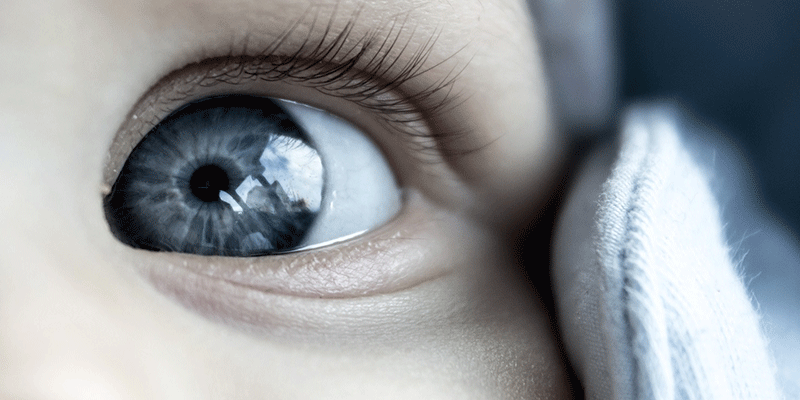
New parents often ask what color I think the baby’s eyes are going to be. I never answer this question until the child is at least 1 year old; I mean, what if the parents believe me and use my answer to make major life decisions? When we talk about eye color, we’re really talking about the appearance of the iris, the muscular ring around the pupil that controls how much light enters the eye. After all, the pupil will always be black, except in flash photos, and the whites (sclera) should stay pretty much white, although jaundice may turn them yellow and inflammation may make them look pink or red.
Eye Color Changes Over Time
Iris color, just like hair and skin color, depends on a protein called melanin. We have specialized cells in our bodies called melanocytes whose job it is to go around secreting melanin. Over time, if melanocytes only secrete a little melanin, your baby will have blue eyes. If they secrete a bit more, his eyes will look green or hazel. When melanocytes get really busy, eyes look brown (the most common eye color), and in some cases they may appear very dark indeed.
Because it takes about a year for melanocytes to finish their work it can be a dicey business calling eye color before the baby’s first birthday. The color change does slow down some after the first 6 months of life, but there can be plenty of change left at that point.
Eye color is a genetic property, but it’s not quite as cut-and-dried as you might have learned in biology class.
- Two blue-eyed parents are very likely to have a blue-eyed child, but it won’t happen every single time.
- Two brown-eyed parents are likely (but not guaranteed) to have a child with brown eyes.
If you notice one of the grandparents has blue eyes, the chances of having a blue-eyed baby go up a bit.
- If one parent has brown eyes and the other has blue eyes, odds are about even on eye color.
- If your child has one brown eye and one blue eye, bring it to your doctor’s attention; he probably has a rare genetic condition called Waardenburg syndrome.
Author David L. Hill, MD, FAAP
Last Updated 6/8/2020
Source Dad to Dad: Parenting Like a Pro (Copyright © American Academy of Pediatrics 2012)
The information contained on this Web site should not be used as a substitute for the medical care and advice of your pediatrician. There may be variations in treatment that your pediatrician may recommend based on individual facts and circumstances.






